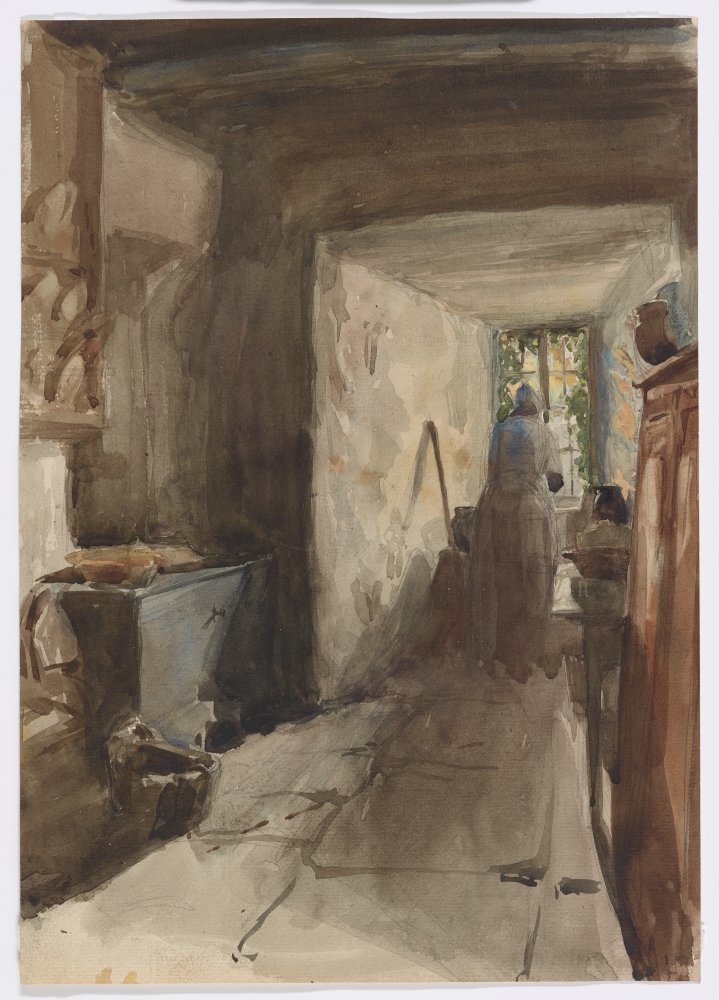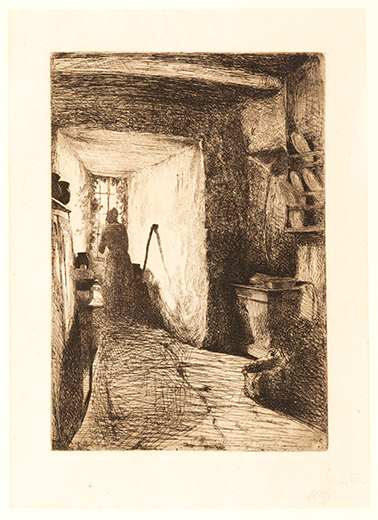Signed in pencil Whistler and with butterfly.
Literature: E. G. Kennedy, The Etched Work of Whistler, New York, 1910, 24 II/III;
Sale Catalogue, The Fine Art Society, James McNeill Whistler. The Embroidered Curtain, London, 2007, n.4;
M. F. MacDonald, G. Petri, M. Hausberg, and J. Meacock, James McNeill Whistler: The Etchings, a catalogue raisonné, University of Glasgow, 2012, on-line website, 16 II/III.
Provenance: H. Wunderlich & Co., New York;
London, The Fine Art Society, 2007.
Exhibitions: London, The Fine Art Society, 2007, n. 4
 The subject of this early proof impression is probably based on a pencil and watercolour drawing (now in the Freer Gallery of Art, inv. F1898.153) made by Whistler during his travels in 1858 on site in a kitchen in Lutzelbourg, a village in the valley of the river Moselle, today Alsace-Lorraine, in north-eastern France. In 1855, Whistler had moved from America to study in Paris at the Ecole Impériale et Spéciale de
Dessin - where Degas was also a student - and in the studio of Swiss painter Charles
Gleyre.
The subject of this early proof impression is probably based on a pencil and watercolour drawing (now in the Freer Gallery of Art, inv. F1898.153) made by Whistler during his travels in 1858 on site in a kitchen in Lutzelbourg, a village in the valley of the river Moselle, today Alsace-Lorraine, in north-eastern France. In 1855, Whistler had moved from America to study in Paris at the Ecole Impériale et Spéciale de
Dessin - where Degas was also a student - and in the studio of Swiss painter Charles
Gleyre.
The Kitchen was published in 1858 by Auguste Delâtre (1822-1907) in Paris as part of the series of twelve etchings Douze eaux-fortes d'après Nature (Twelve Etchings from Nature). The series, also known as the French Set, was dedicated to Whistler's brother in law, the collector Seymour Haden (1818 – 1910) who had encouraged him to etch from nature. The French Set achieved great success in Britain, where it was published in the third state by the Fine Art Society in London in 1884.
-
